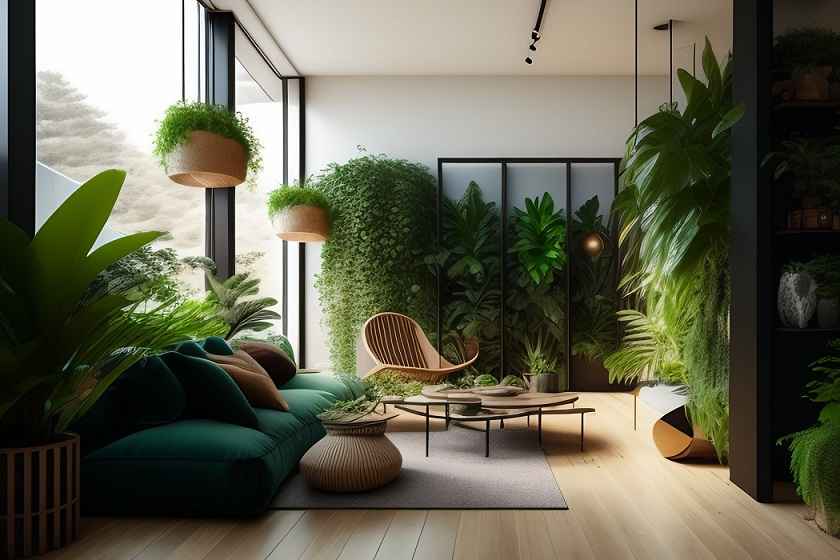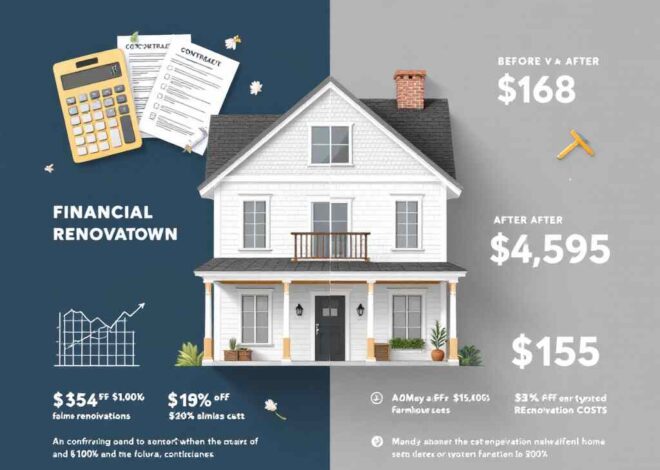
What Is Biophilic Design and Why It’s Good for You
In today’s fast-paced, technology-driven world, the importance of design in our everyday lives cannot be overstated. From the homes we live in to the offices we work in, the spaces we occupy have a profound impact on our physical, mental, and emotional well-being. Biophilic design is an approach that recognizes this connection and seeks to create spaces that nurture our innate affinity for the natural world.
At its core, biophilic design is the integration of natural elements and materials into the built environment to promote well-being and productivity. By incorporating elements like natural light, greenery, and natural textures, biophilic design aims to create a harmonious and restorative environment that enhances our connection to the natural world.
Definition and History of Biophilic Design
Biophilic design is rooted in the concept of biophilia, a term coined by the renowned psychologist Edward O. Wilson. Biophilia refers to the innate human tendency to seek out and connect with nature and natural systems. This idea has been further developed by researchers and designers who have recognized the profound impact that our environment has on our physical, mental, and emotional well-being.
The principles of biophilic design are based on the understanding that humans have evolved to thrive in natural environments. By incorporating these natural elements into the built environment, biophilic design aims to create spaces that are not only visually appealing but also support our physical and psychological needs.
The key elements of biophilic design include:
- Natural light and ventilation
- Use of natural materials and textures
- Incorporation of plants and greenery
- Inclusion of natural views and vistas
- Sensory experiences, such as sound, smell, and touch
By thoughtfully integrating these elements into the design of our spaces, biophilic design seeks to create a harmonious and restorative environment that promotes well-being and productivity.
Benefits of Biophilic Design
The benefits of biophilic design are numerous and far-reaching, spanning physical, mental, and environmental domains.
Physical and Mental Health Benefits
Biophilic design has been shown to have a positive impact on our physical and mental health. Studies have found that exposure to natural elements, such as plants and natural light, can reduce stress, improve mood, and enhance cognitive function. This is believed to be due to the calming and restorative effects that nature has on the human body and mind.
Productivity and Performance Benefits
In addition to the health benefits, biophilic design has also been shown to improve productivity and performance in various settings. Spaces that incorporate natural elements have been linked to increased focus, creativity, and collaboration among occupants. This is particularly relevant in the workplace, where biophilic design can contribute to a more engaging and productive work environment.
Environmental Benefits
Biophilic design also offers environmental benefits, as it can help reduce energy consumption, improve air quality, and enhance biodiversity. By incorporating natural ventilation, energy-efficient materials, and diverse plant life, biophilic design can create more sustainable and eco-friendly spaces.
Aesthetic Benefits
Finally, biophilic design offers aesthetic benefits, creating visually appealing and harmonious spaces that are a joy to inhabit. The use of natural materials, textures, and colors can contribute to a sense of warmth and comfort, while the incorporation of greenery and natural views can add a sense of tranquility and serenity.
How Biophilic Design Can Be Implemented
Implementing biophilic design principles can take many forms, depending on the specific needs and constraints of a given space. Here are some of the key ways in which biophilic design can be incorporated:
Incorporating Natural Light and Ventilation
One of the foundational elements of biophilic design is the incorporation of natural light and ventilation. This can be achieved through the strategic placement of windows, skylights, and other architectural features that allow natural light to flood the space. Additionally, natural ventilation systems can be designed to circulate fresh air and promote a sense of connection to the outdoors.
Using Natural Materials and Textures
The use of natural materials and textures is another essential aspect of biophilic design. This can include the use of wood, stone, and other organic materials in the construction and furnishing of a space. These materials not only add visual interest but also contribute to a sense of warmth and tactility that can enhance the user experience.
Incorporating Plants and Greenery
The incorporation of plants and greenery is a hallmark of biophilic design. This can range from potted plants and living walls to more extensive landscaping and indoor gardens. The presence of plants not only adds visual interest but also contributes to improved air quality and a sense of connection to the natural world.
Designing Spaces with Natural Views and Vistas
Providing natural views and vistas is another key element of biophilic design. This can involve strategically placing windows and openings to frame views of nature, or even incorporating elements like indoor atriums or courtyards that bring the outdoors in.
Creating Sensory Experiences
Biophilic design also seeks to create sensory experiences that connect occupants to the natural world. This can include the use of natural sounds, such as the gentle flow of water or the rustling of leaves, as well as the incorporation of natural scents and textures that engage the senses.
Examples of Biophilic Design in Practice
Biophilic design principles have been successfully implemented in a variety of settings, from offices and homes to hospitals and public spaces. Here are a few examples:
The Daintree Ecolodge, Australia
The Daintree Ecolodge in Australia is a prime example of biophilic design in action. The lodge is nestled within the lush Daintree Rainforest, with each guest suite designed to seamlessly integrate with the surrounding natural environment. The use of natural materials, such as timber and stone, combined with the incorporation of large windows and open-air living spaces, creates a sense of harmony and connection with the natural world.
The Bullitt Center, Seattle, USA
The Bullitt Center in Seattle is a commercial office building that has been hailed as a model of biophilic design. The building features an abundance of natural light, with large windows and a central atrium that allows sunlight to flood the interior spaces. The use of natural materials, such as wood and stone, and the incorporation of a rooftop garden and green spaces, contribute to a sense of connection with nature.
Maggie’s Centre, Gartnavel, UK
The Maggie’s Centre in Gartnavel, UK, is a cancer support center that has been designed with biophilic design principles in mind. The building features large windows that provide expansive views of the surrounding gardens, and the use of natural materials, such as wood and stone, creates a warm and inviting atmosphere. The incorporation of a central courtyard and the strategic placement of plants and greenery further enhance the sense of connection with nature.
Challenges and Limitations of Biophilic Design
While the benefits of biophilic design are well-documented, there are also some challenges and limitations to consider.
Budget Constraints
One of the primary challenges of biophilic design is the potential for higher upfront costs, particularly when it comes to the incorporation of natural materials, complex ventilation systems, and extensive landscaping. Careful planning and budgeting are essential to ensure that the benefits of biophilic design outweigh the initial investment.
Space Limitations
In some cases, the physical constraints of a space may limit the extent to which biophilic design principles can be implemented. For example, in dense urban environments, the availability of natural light and greenery may be more limited, requiring creative solutions to achieve the desired biophilic effect.
Conflicting Design Priorities
In some instances, biophilic design principles may conflict with other design priorities, such as energy efficiency or accessibility. Striking a balance between these competing priorities requires careful consideration and a holistic approach to design.
Conclusion
Biophilic design is a powerful approach that recognizes the profound impact that our built environment has on our physical, mental, and emotional well-being. By incorporating natural elements and materials into the design of our spaces, biophilic design has the potential to improve our health, boost our productivity, and create more sustainable and eco-friendly environments.
As we continue to navigate the challenges of modern life, the principles of biophilic design offer a compelling solution that can enhance our connection to the natural world and improve our overall quality of life. By embracing biophilic design, we can create spaces that not only look and feel good but also nourish our minds, bodies, and spirits.
If you’re interested in incorporating biophilic design principles into your own space, whether it’s your home, office, or community, I encourage you to explore the wealth of resources and case studies available. By taking the time to understand and implement these principles, you can unlock the transformative power of nature and create a more harmonious and restorative environment for yourself and those around you.


